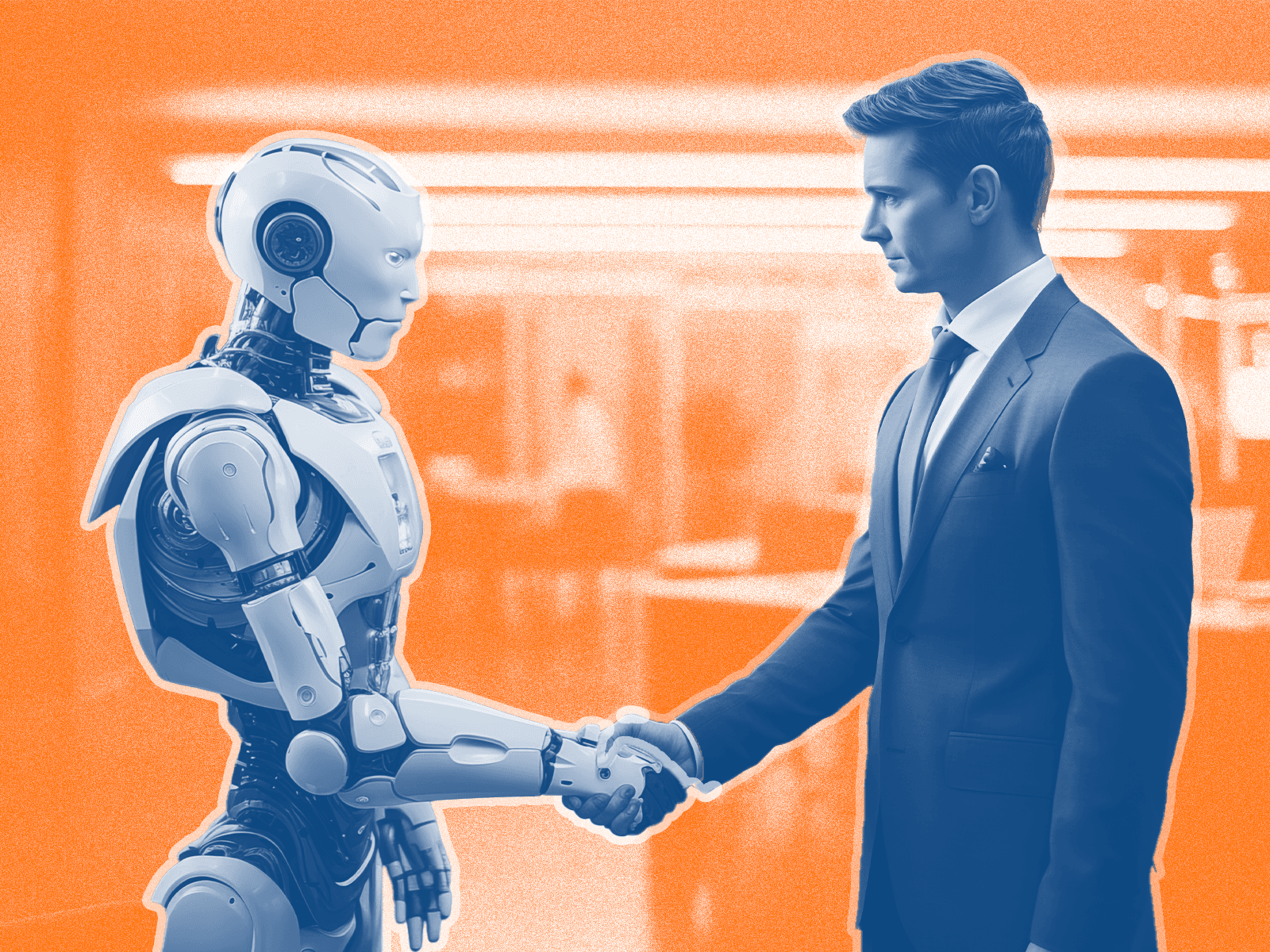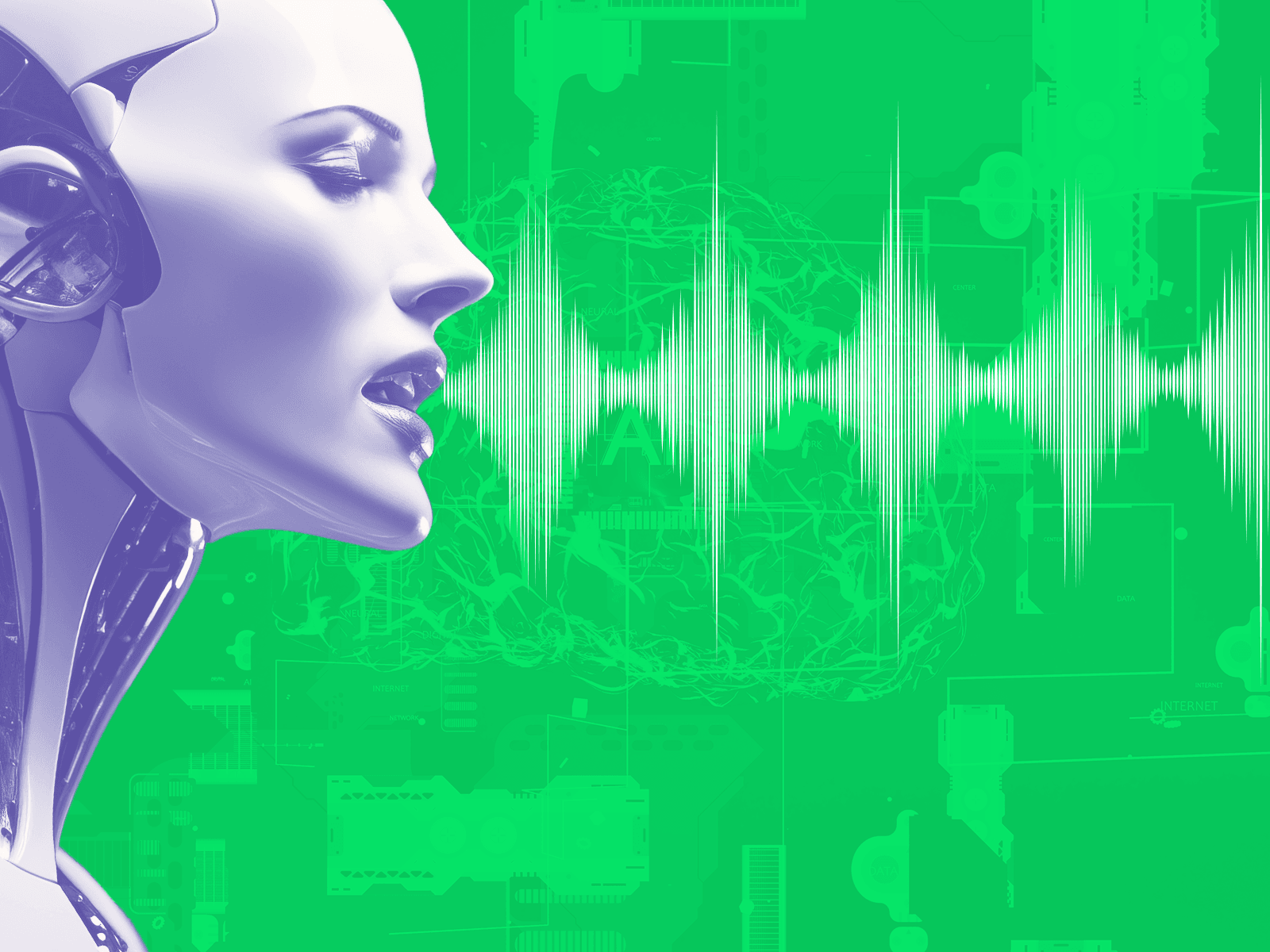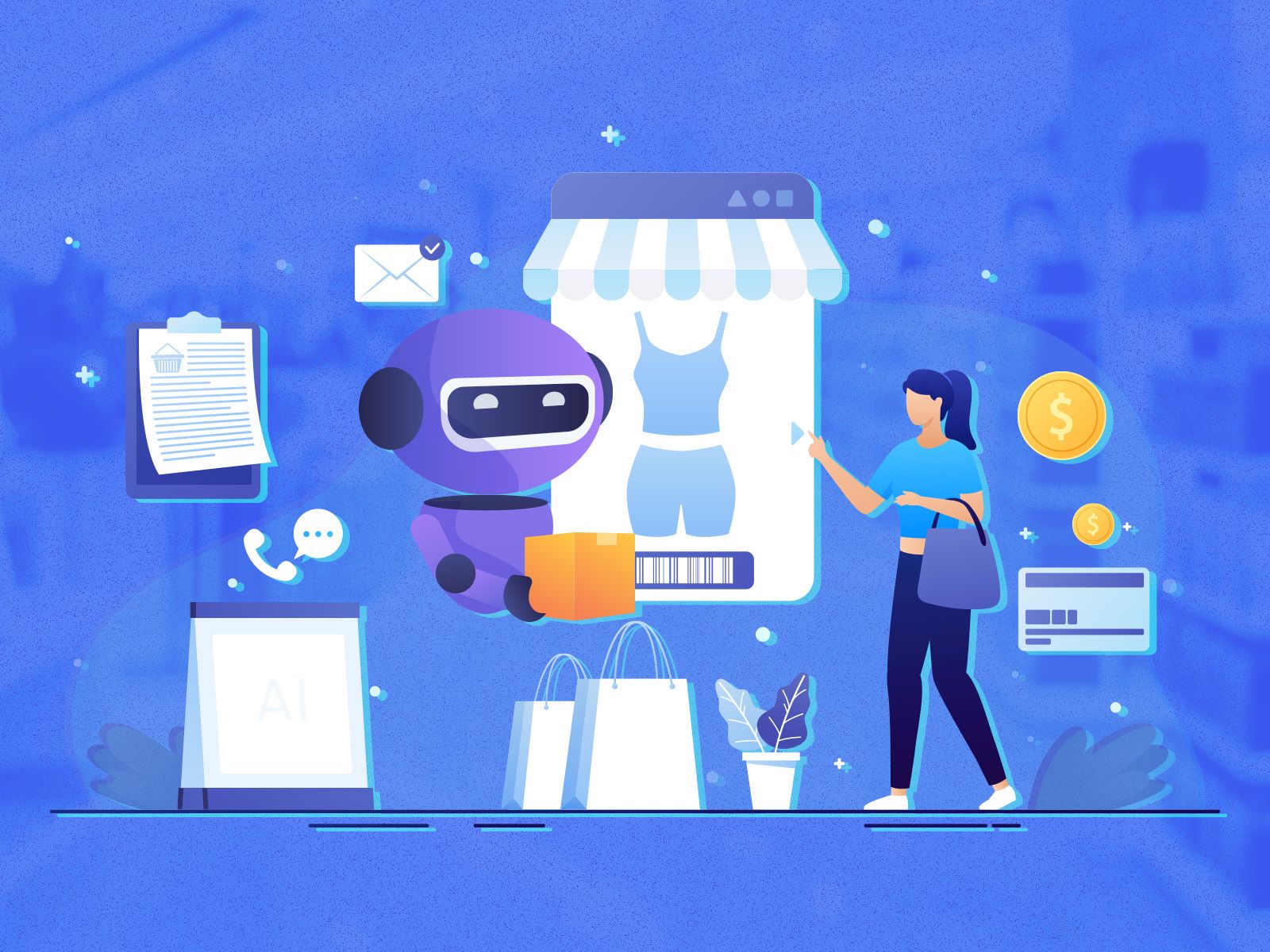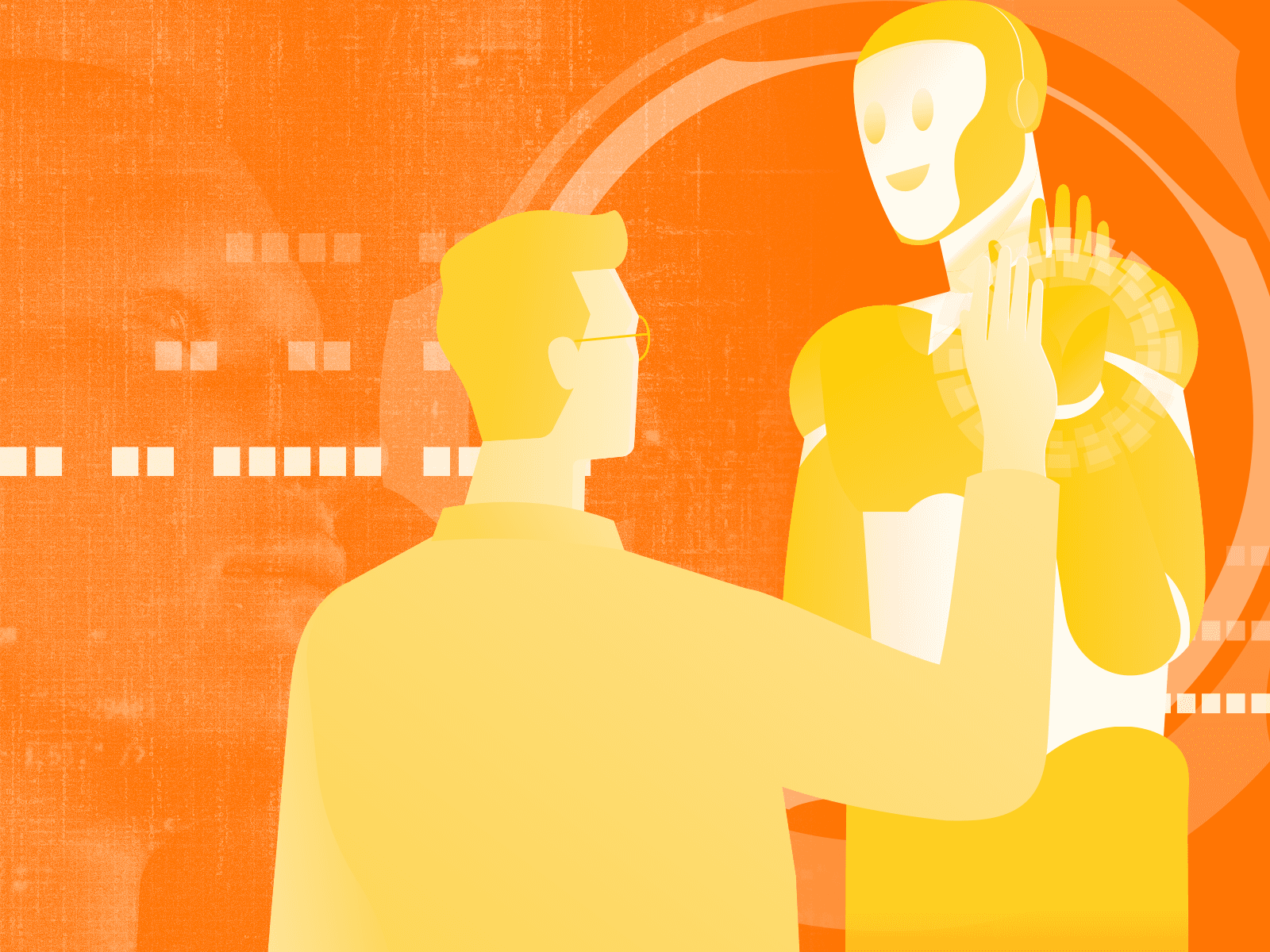The Total Experience: A Human-Centric Approach to Generative AI

Illustration: © AI For All
The rapid advancements in Generative AI technology have heralded an era of unprecedented potential. AI is becoming more than just a tool—it’s evolving into a partner that can amplify our capabilities and facilitate the achievement of our goals. At the heart of this is the understanding of how people, technology, and businesses interact with each other, which shapes a brand’s total experience.
Grounded in Human Intelligence
AI has the capacity to generate impressive results, but it is essential to remember that these achievements are inherently grounded in human intelligence. This is particularly evident in Generative AI, where the technologies we develop are not merely tools, but extensions of our own ingenuity and creativity.
Consider the process of using Generative AI to write an article or even compose a piece of music. It begins with a human prompt—a part of our thought processes, our creativity, and our knowledge. This human input serves as the seed from which the AI grows its output. The result, while technically “created” by AI, is a reflection of the human intelligence that initiated the process. This interplay between human creativity and AI is a key component of total experience.
But the human role doesn’t stop at the prompt. Once AI has generated its output, it is up to us—the humans—to evaluate its relevance and value. We are the critical eye, the contextual understanding, and the ultimate judgment of the work produced. We decide whether the AI’s output is appropriate, meaningful, and useful in the given context.
Architects of AI Models
Our role extends beyond individual instances of AI use. We are the architects of the AI models themselves. The algorithms that power Generative AI are born from human intellect, built upon our understanding of patterns, relationships, and logic. As these models learn and evolve, they do so guide by the human hand, reflecting our goals, our values, and our direction.
Generative AI serves not just as a tool but as a partner, amplifying our capabilities and extending the reach of our intelligence. It’s a testament to the ongoing relationship between technology and people and an embodiment of our ability to shape our tools, even as our tools shape us.
As we continue to explore the possibilities of Generative AI, we can’t lose sight of the essential human element at its core. It’s through our creativity, our intellect, and our judgment that we truly unlock the potential of AI.
Ethics & Bias: A Critical Conversation
As we embrace the myriad opportunities of Generative AI, we must also address critical ethical considerations. The potential for misuse or unintended consequences requires that we are vigilant and institute a responsible approach to the deployment and use of AI technologies.
A major concern is the potential for Generative AI to be used as a tool for manipulation or deception. Its ability to create highly personalized and seemingly authentic content could be used to mislead or influence us. These scenarios could range from the creation of deepfakes to manipulative advertising or the proliferation of misinformation. This misuse threatens the integrity of information, and the trust users place in organizations and their content.
Trust also becomes a critical factor for organizations, especially marketing departments, as they incorporate Generative AI into their strategies. They must consider how to maintain and build trust while benefiting from the capabilities of AI technologies. Authenticity, transparency, and accountability will be key components in this trust-building process. This extends from ensuring AI-generated content is distinguishable from human-created content to maintaining open dialogues about the use and purpose of AI within the organization.
Another area of ethical consideration is the issue of plagiarism and intellectual property rights. When Generative AI creates content, the source of the inspiration or information can sometimes be traced back to existing copyrighted material. We need to develop these technologies to respect and uphold the rights of original content creators.
Blurred Lines Between Humans & AI
Generative AI’s use also raises concerns about blurring lines between human and AI-generated content. The models are becoming so sophisticated, and their output more human-like that we need to have a clear focus to build transparency about the origin of content in the models while taking the time to understand the potential impacts on perception and trust.
The issue of privacy also remains paramount, particularly as Generative AI often relies on large sets of data to operate. This data must be used responsibly so that individuals’ privacy is respected, and that we maintain transparency about how personal data is used. The same goes for sensitive enterprise data too.
These ethical considerations underline the importance of a principle-based approach to Generative AI, prioritizing fairness, respect, transparency, and accountability. These principles are not just about ethical compliance but are foundational to maintaining the trust of customers and users. As we navigate the exciting yet uncharted waters of this technology, these principles must guide our way, helping us align the development and use of AI with our highest ideals and aspirations.
Reimagining Employee Experience
The integration of AI into our workplaces is doing more than just transforming operational workflows—it’s reshaping. As we explore the possibilities, it’s becoming increasingly clear how AI can enhance workflows, bolster productivity, and improve overall job satisfaction.
The opportunities seem nearly endless—if we can imagine it, we can likely create it, and if we’re short on ideas, we can simply ask the AI system for suggestions. Currently, AI’s ability to automate routine tasks is liberating employees from repetitive work, allowing them to tackle more complex and creative challenges. However, these changes require a thoughtful approach to change management, with a focus on adequate training and a keen awareness of the rapid dynamics inherent in the use of learning models.
The primary goal of AI integration should be to empower employees. AI is a tool that should amplify, not replace, human creativity and expertise. Through thoughtful implementation and a commitment to ongoing adaptation, we can ensure that AI serves as a positive force in the workplace and enriches the entire employee experience as a part of an organization’s total experience.
Fostering a Culture of Experimentation & Problem-Solving
The journey toward the future of Generative AI requires fostering a culture of experimentation, curiosity, and creative problem-solving. This dynamic journey aligns well with the second principle of the Agile Manifesto, which encourages us to “welcome changing requirements, even late in development, harnessing change for the customer’s competitive advantage.”
The power of Generative AI to spark new ideas, strengthen product development processes, and transform both customer and employee experiences is tremendous. However, it’s important to recognize that while it offers immense potential, AI is not a panacea—it’s a tool to be used wisely and thoughtfully.
As we continue working with AI, our dedication to exploration and problem-solving sparks innovation and promotes resilience and adaptability. It invites us to interact with AI in a way that’s about more than just using it—it’s about learning from it, refining it, and integrating it into our strategies in meaningful and ethical ways. As we dive deeper into the AI era, this mindset will be key in shaping a future where AI and humans work together, each enhancing the other’s capabilities and contributions.
Shaping AI and Total Experience
Generative AI represents more than a technological revolution. It symbolizes a paradigm shift in our relationship with technology and as we leap into this new era, we as tech leaders have the responsibility to innovate while upholding the highest ethical standards.
For this reason, we champion AI as a tool that extends, rather than supplants, human capabilities, empowering individuals and transforming experiences at every touchpoint, and embrace the total experience. We foresee a future where AI and humans work synergistically, with technology amplifying our potential and fostering a culture of innovation. This journey is not merely about AI integration; it’s about carving out a future where the human experience—be it of our employees or customers—remains at the heart of progress.
Generative AI
AI Ethics
Author
Author
At Rightpoint, we drive digital transformation by delivering engaging customer experiences across products and operations. As a global product and experience leader, our team of 800 experts across 12 offices helps clients bring the right solutions to the right problems.









